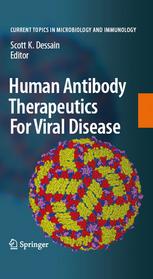

Most ebook files are in PDF format, so you can easily read them using various software such as Foxit Reader or directly on the Google Chrome browser.
Some ebook files are released by publishers in other formats such as .awz, .mobi, .epub, .fb2, etc. You may need to install specific software to read these formats on mobile/PC, such as Calibre.
Please read the tutorial at this link: https://ebookbell.com/faq
We offer FREE conversion to the popular formats you request; however, this may take some time. Therefore, right after payment, please email us, and we will try to provide the service as quickly as possible.
For some exceptional file formats or broken links (if any), please refrain from opening any disputes. Instead, email us first, and we will try to assist within a maximum of 6 hours.
EbookBell Team

5.0
38 reviewsThe articles in this volume have been selected to demonstrate the progress in the development of human antibody therapeutics for viral disease. Keck et al. review the nature of the immune response to the Hepatitis C virus (HCV) and the details of viral neutralization by antibodies, providing a conceptual model for the clinical use of HCV-specific antibodies. Huber et al. summarize the initial clinical experiences with antibody therapeutics for Human Immunodeficiency Virus that can be targeted to either the HIV virion or to host cell proteins. A discussion of the breadth immune strategies that is required to control human rabies is provided by Nagarajan et al., with a particular focus on India and other countries in which rabies is endemic. The development of pavilizumab for RSV prophylaxis is reviewed in Wu et al., in addition to results of antibody optimization studies that provide surprising insights and have broad general implications for anti-viral antibody engineering. Melhop and Diamond explicate the biology of West Nile Virus as a general model for flaviviruses, while using their cloned antibodies as a springboard to consider the mechanisms of WNV neutralization. The volume concludes with a description of methods to clone human antibodies in their native configurations, which access a class of antibodies that differ from those obtained by recombinant DNA or transgenic mouse methods.
The articles in this volume are definitive and comprehensive reviews written by experts who have sought to define the principles of viral neutralization by human antibodies. They explore and anticipate the obstacles and opportunities that will be encountered as the power of human antibodies is harnessed to address the vast, un-met need for effective anti-viral therapeutics.